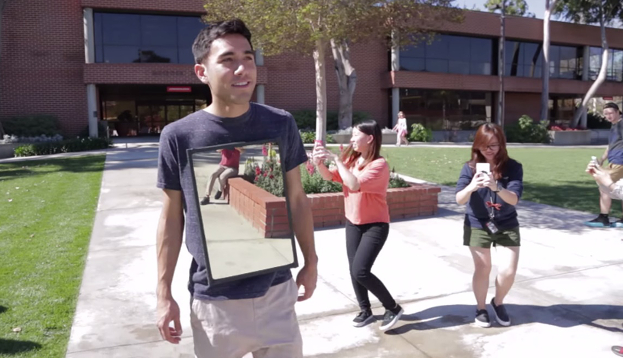Influencer marketing has been having its moment for some time now and is showing no signs of slowing down. In fact, twenty-two percent of marketers have cited influencer marketing as the fastest-growing online customer acquisition method.
It’s all happening for a reason.
Word Of Mouth Is More Powerful Than Ever
It may seem like a no-brainer, but don’t discount the power of word of mouth as a way to drive sales. According to Nielsen, 92 percent of consumers will believe a recommendation from friends and family over other forms of advertising. As such, word of mouth is a primary factor in 20 to 50 percent of all purchase decisions.
“A brand is no longer what we tell the consumer it is–it is what consumers tell each other it is,” says Scott Cook, the founder and CEO of Intuit.
Brands Are Going All-In On Social
A whopping 70 percent of brands are planning on increasing their spend on social media advertising this year and 59 percent of marketers plan to increase their budgets specific to influencer marketing. To make the most out of this increase in spend, brands can look to work with influencers that make the most sense for them, in terms of tone, voice and audience, to create content that is more organic and engaging.
Google Searches for ‘Influencer Marketing’ Are Blowing Up
If anything is a good indicator of what’s hot out there, it’s Google.
Where There Are Big Opportunities, There Is Big Value
A recent survey has provided insights into what kind of returns marketers are seeing from their investments into influencer marketing. On average, they are seeing $6.50 for every $1 spent, while 70 percent of marketers are seeing a return of $2 per $1 spent. For those who have used influencer marketing most effectively, the top 13 percent of marketers are gaining $20 per $1 spent.
“Marketers are already shifting budgets to influencer marketing but the market sizing data is not quite there yet,” says Jon Roth, Executive Director of ION.
“This is typical of early markets like search and social before they grew quickly. Brand dollars are now shifting to integration with these new preferred content forms, just like dollars shifted previously to search marketing and social marketing as the sectors matured.”
According to Misha Talavera, that gap will be closed in due time. “Influencer marketing is currently an arbitrage. There is a massive supply of influencers, but few marketers running influencer campaigns, meaning that the cost of buying an influencer promotion is below its real value.”
Influencer Marketing Cuts Through Banner Blindness
Eighty-six percent of consumers “suffer” banner blindness– that means only 14 percent are able to remember the last display ad they have seen.
“What all marketers are dealing with is an absolute sensory overload,” said Gretchen Hofmann, executive vice president of marketing and sales at Universal Orlando Resort, to the New York Times.
It makes sense that 70 percent of consumers prefer content instead of traditional advertising to learn about new products. It’s working— purchase intent is 53 percent higher and brand lift is 82 percent for native ads at large.
Data, Data, Data
The transition to a digital way of doing things has afforded marketers access to data that would have previously been much more difficult, expensive and less accurate. By leveraging this data for influencer marketing, we can further define which influencers are key and put a number on not just views but also engagement, so we can build better and better campaigns to scale.
“Influencer campaigns are so much more accountable than traditional vehicles like broadcast or outdoor billboards. Ultimately, those figures are estimates based off industry standards,” says Steven Lai, ION’s talent group director. “But digital content like influencer campaigns can be granularly tracked from impressions/views to clicks to purchase. Setting up campaigns properly, we can track every action a user takes as they progress through the purchase funnel and optimize in real time.”
The Content Shift Of Power Has Already Happened
“The shift with respect to preferred short-form influencer content has already occurred,” says Roth. For Roth, this key moment happened when Disney had acquired Maker Studios for a reported $950 million in March of 2014, to incorporate niche and often personality-driven short form video content into Disney’s existing content mix. A flurry of other major MCN deals have occurred before and after, but it has taken some time for brand dollars to follow.
According to Pixability and Google, the world’s top 100 brands have 55 percent increase of monthly views on YouTube over the past year, with an increasing quantity of videos produced. YouTube’s belated rival, Facebook, says video accounts for 22 percent of total ad spend.
According to Tapjoy, native ads are slated to continue to grow, especially on mobile, with budgets shifting from TV to mobile video as well. By 2018, eMarketer predicts that digital video advertising spend will finally eclipse TV.
Join us for part two of the Influencer Marketing Webinar series to take a deep look at the next crucial step in building influencer relationships – Create. Request an invite.

